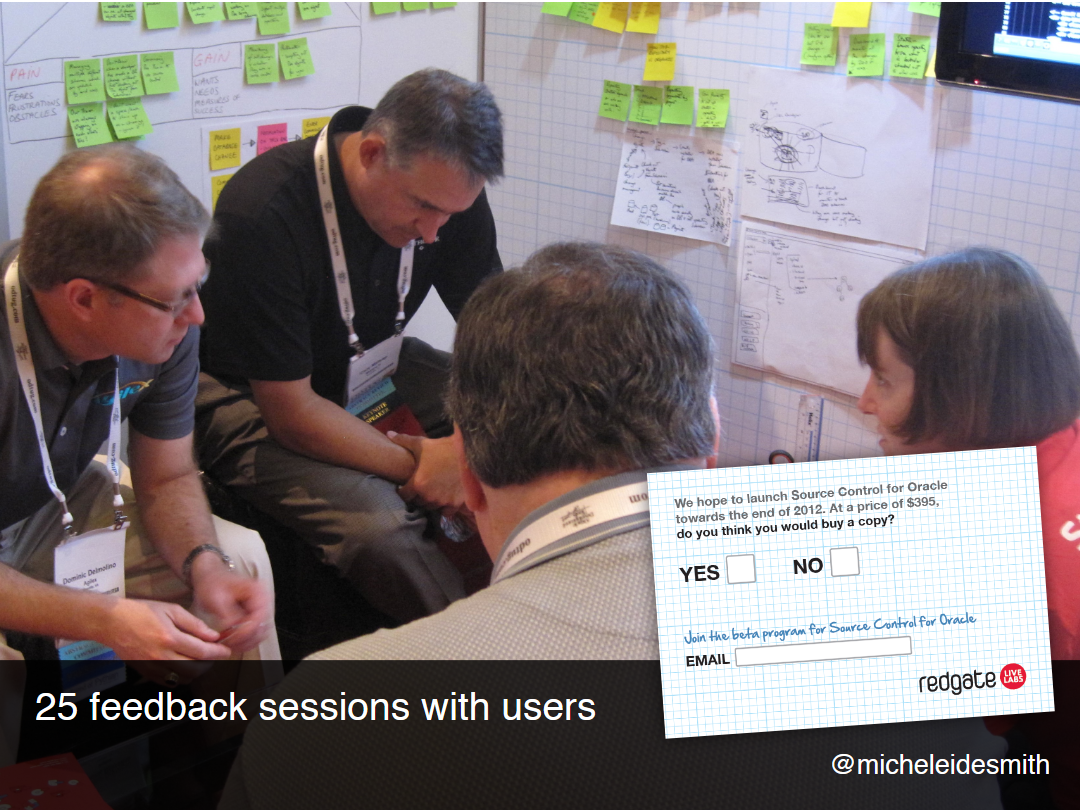Source controlling databases is manual and time-consuming, prone to human error, which causes problems during deployments such as accidental data loss. Red Gate Software already had a source control tool for SQL databases, but did not have one for the Oracle market.
The challenge
This was a technically complex project with a small team and a very tight deadline. We had 9 months to design, develop and ship the product.
What I did as a UX Designer
Inspired by The Lean Startup by Eric Ries and Lean UX by Jeff Gothelf with Josh Seiden, our team planned a different approach to running a conference stand. A typical conference stand is manned by Marketing and Sales teams, doing product demos, giving out merchandise and inviting people to sign up to a mailing list. At the Kscope Oracle conference in 2012 our trade show stand became a ‘Live Lab’ to rapidly prototype the new Source Control for Oracle tool. The stand design was conceived by our Marketing Manager James and included a sprint board on the back wall.

The Lean UX principles that I was inspired by and adopted were:
- Continuous discovery
- Shared understanding
- GOOB (Get Out Of the Building)
- Externalising your work
Our hypothesis was:
Oracle Developers & DBAs need a better way to source control their database schemas
If we had more than 70% interest we would develop the tool.
During the 3 day conference I ran 25 guerrilla research sessions, testing paper prototypes with customers.
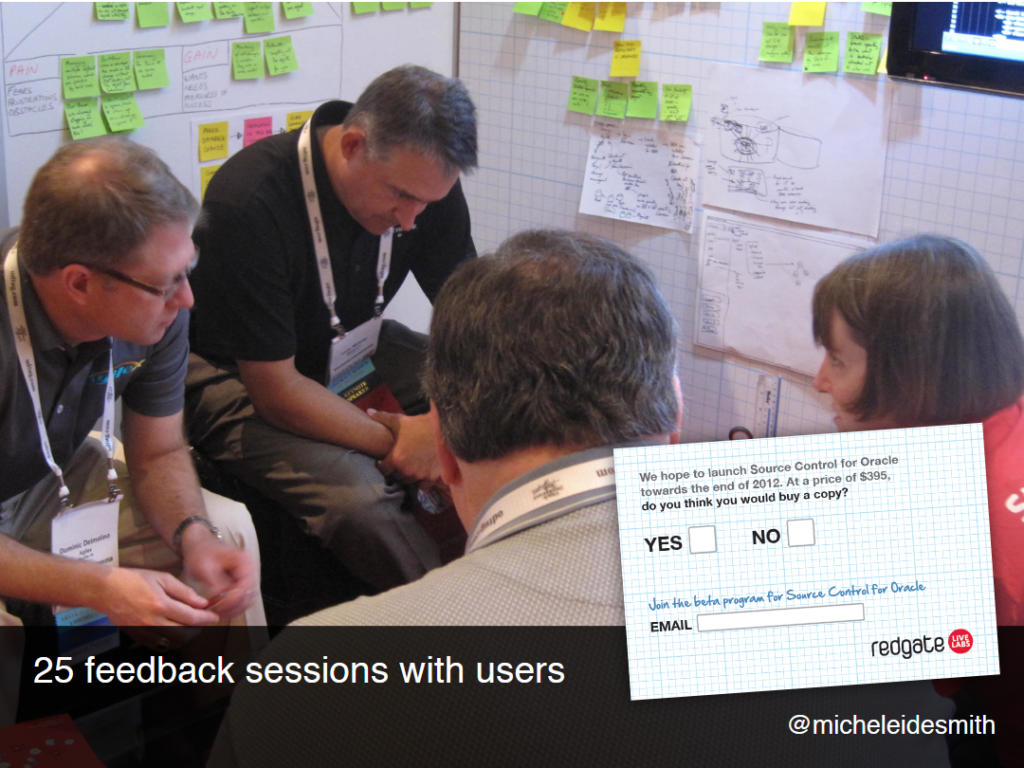
At the end of the user research sessions we asked customers if they would buy a copy of the tool and invited them to sign up to our beta program mailing list.
I created a customer empathy map and affinity map on the stand wall to capture insights to share with the team and users. People who took part in our user research returned to the stand to see how our prototype was progressing and what feedback we had received. Because we involved customers in the design process, they were very keen to sign up for our beta program to get early access to the tool.
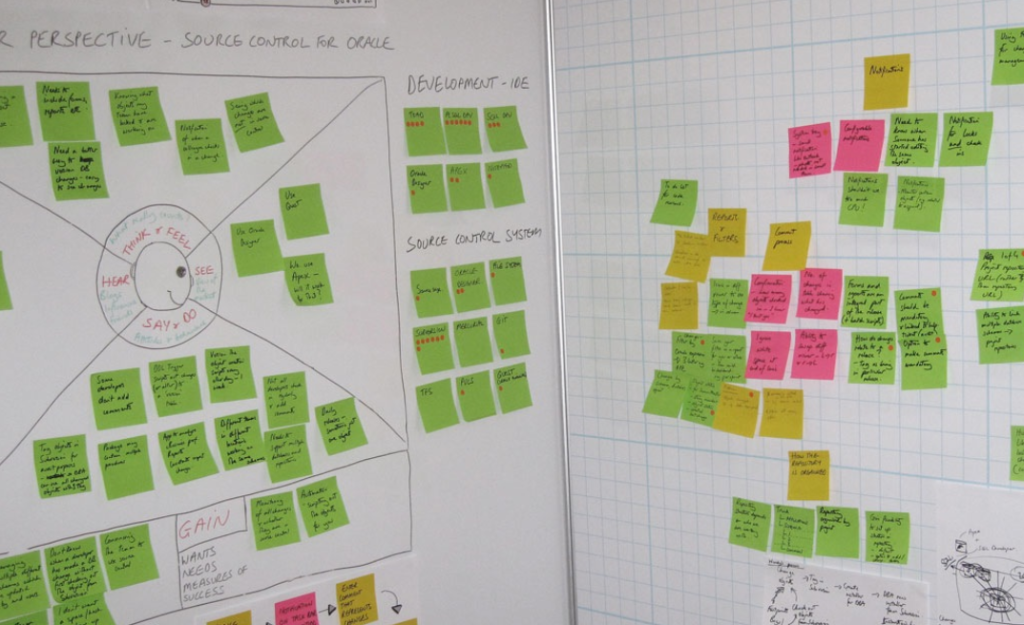
We fixed pain points and learned about customer needs, their development and deployment environments and real world scenarios.
My colleague David then started to prototype the tool in HTML/CSS and we got further feedback from customers.
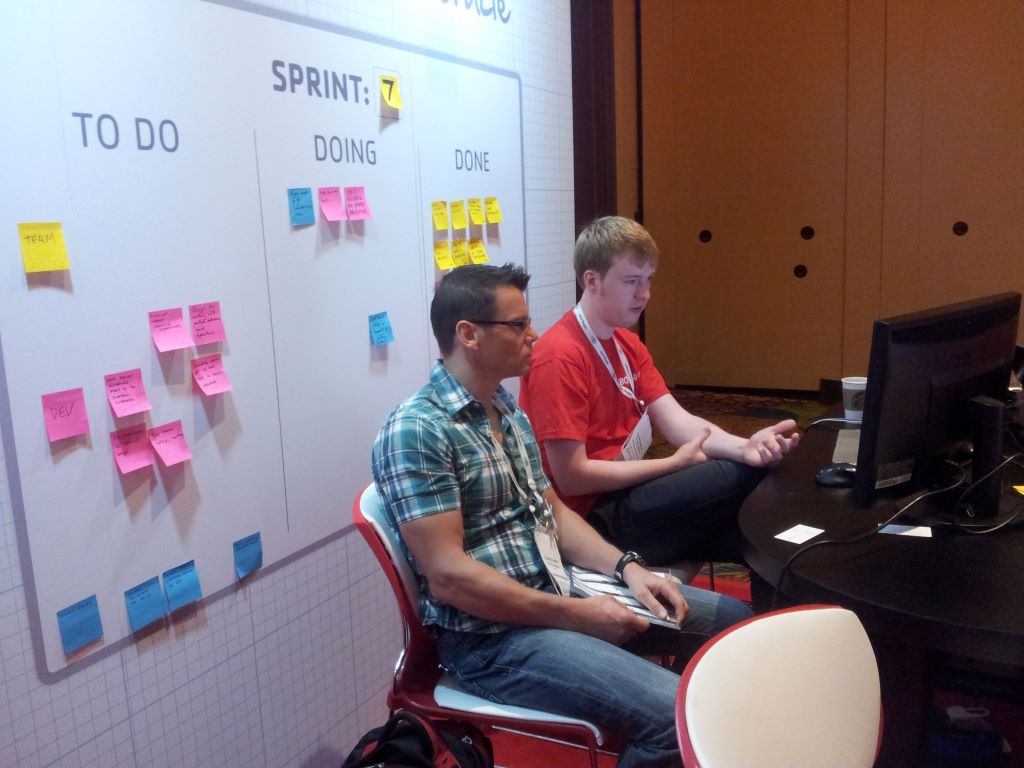
After 3 fun but exhausting days, we returned to the UK. Back at the office we continued to run customer surveys to test hypotheses. For example knowing whether database developers are assigned their own database schema to work on. We found that the majority of developers have to work on a shared schema. I created a flow diagram ensure the team had a shared understanding of users’ workflows. And I conducted remote usability tests on interactive prototypes and beta-quality releases, as well as interviews with customers. I involved the team in analysing research data collaboratively.
When we were close to release I created a diagram to communicate the product concept to customers as part of the Go To Market materials.

Outcomes
“Source Control for Oracle is a huge time saver for me and for teams that I work with. It doesn’t remove the need to version control, but it takes the tedious steps out of the picture. I am blown away!”
Lewis Cunningham, Database Architect, Oracle ACE Director
We shipped version 1.0 in March 2013 – taking the product to market in just under 9 months. Source Control for Oracle enables Oracle database developers to clearly see the differences between databases in different environments and their source control repository.
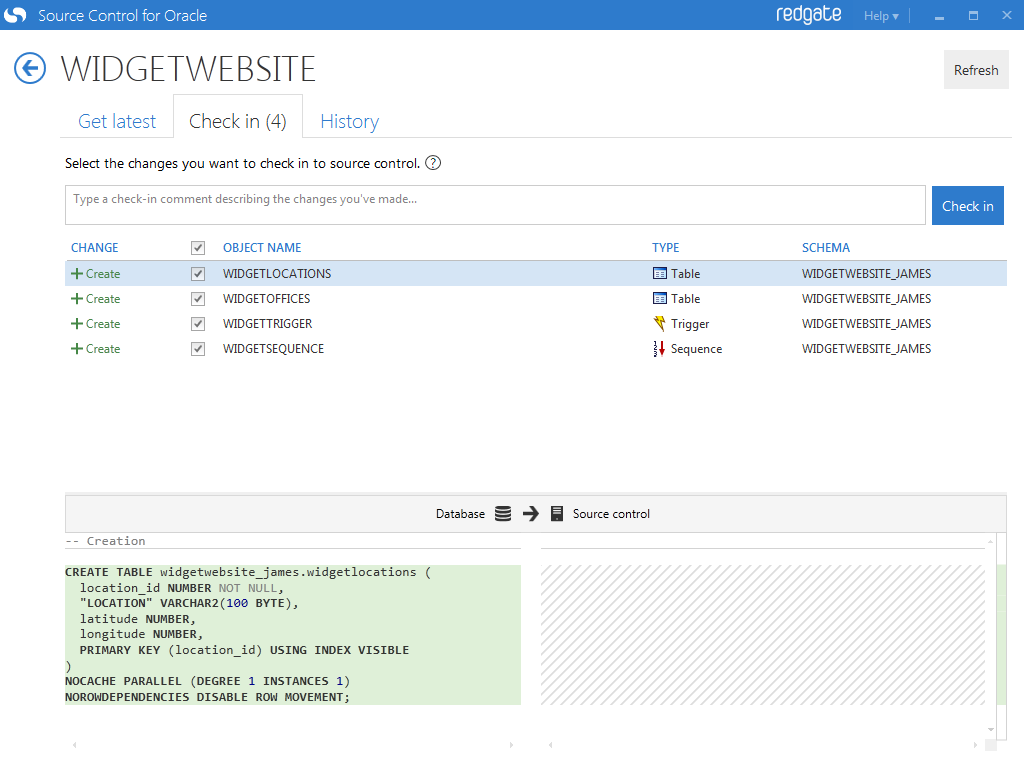
The tool was well received by the Oracle Developer community and we had several endorsements during our beta program. It is still a market leader after 13 years.
References
Rapid Product Design in the Wild, Agile 2013
Rapid Product Design in the Wild, Product Tank 2014
Lean UX and Product Design, Mind the Product 2016
